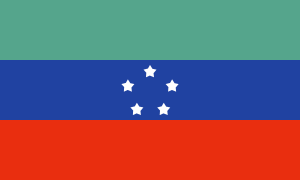Sidama people facts for kids
| Total population | |
|---|---|
| 3.81 million (2007 census) | |
| Regions with significant populations | |
| Ethiopia | |
| Languages | |
| Sidamu-Afoo | |
| Religion | |
| Protestant Christianity, Ethiopian Orthodox Tewahedo, Islam | |
| Related ethnic groups | |
| Oromo, Gurage, Welayta, Amhara, Somali, Afar, Tigrayans, Saho, other Cushitic peoples |
The Sidama are a group of people living in the Sidama Region of Ethiopia. This area used to be part of the Southern Nations, Nationalities, and Peoples' Region. On November 23, 2019, the Sidama area became the 10th regional state in Ethiopia. This happened after people voted in a special election.
The Sidama people speak the Sidama language, also called Sidaamu-afoo. This language is part of the Cushitic language family. This family is a branch of the larger Afroasiatic language family. Even though there are many Sidama people, they did not have their own state for a long time. Protests led to the vote in November 2019, which created their new region.
Contents
Sidama History and Origins
When people first wrote about the Sidama, there was some confusion. It was not always clear who the Sidama people were. It was also hard to say exactly where their lands were located. In older writings, the name "Sidamo" was sometimes used for many different groups. These groups were Cushitic and Omotic people in southwest Ethiopia.
People believe the Sidama originally lived near the Dawa River. This was in a historical area called Bali. In the early 1500s, the Oromos moved into the area. The Sidama then moved west to where they live today, near Lake Awasa. Stories passed down through generations say that another group, the Hofa, lived there first. The Sidama settlers later moved them out.
Throughout Sidama history, two main groups of families, called clans, wanted political power. The first group was the Yemericho. This group included eight clans. They were the first people to settle in the area. They owned large areas of land. Because of this, they were seen as having a very pure background.
The second group was the Aletta. This group had twelve clans. Together, they made up most of the Sidama population. In the past, each Sidama clan had its own land and leaders. These clans often fought wars against each other.
The Sidama were later made part of the Ethiopian Empire. This happened during a time called the Agar Maqnat. Most of the Sidama clans joined Emperor Menelik II without fighting. Some clans, like the Hollo-Garbicho and Sawola in the north, tried to defend their land. Some Aletta clans in the south also tried to fight. But they did not trust each other. This stopped them from working together to fight as one group. Other clans, like the Yanase, quickly decided to join the Emperor. They agreed to pay him tribute.
Sidama Population and Language
There are about 3.81 million Sidama people. This means they make up about 4.01% of Ethiopia's total population. About 149,480 Sidama people live in cities. They are the fifth largest ethnic group in Ethiopia.
Their language is called Sidaamu-afoo. A study in 1994 showed that 99.5% of Sidama people speak Sidaamu-afoo as their first language.
Government and Sidama Politics
Today, the Sidama area has many schools. It also has good health services. Education has grown a lot, from primary schools to colleges and universities. The Sidama area used to be an administrative zone. It was part of Ethiopia's Southern Nations, Nationalities, and Peoples' Region. After a vote in November 2019, the Sidama Zone became its own regional state. This means it now has more control over its own government.
Sidama Economy and Farming
Almost 90% of the Sidama people work in farming. An important food for them is the wesse plant. This plant is also known as the false banana. Other crops are also grown in the area. People also often raise cattle. Owning cattle is a strong cultural tradition for the Sidama.
Perhaps the most important way the Sidama earn money is from coffee. "Chat" or khat trees are also a major source of income. The Sidama area grows a lot of coffee. It sends a high percentage of coffee for export to the central government. Only the Oromia region produces more coffee. Sidama farmers have faced hunger because world coffee prices have gone down. This happened even though they supply coffee to big companies like Starbucks.
Sidama Religion and Beliefs
Many Sidama people have traditional beliefs. Some also follow other religions. The 1994 national study showed that 66.8% of Sidama people are Protestant Christians. About 7.7% are Muslim. Another 4.6% are Catholic. About 2.3% practice Ethiopian Orthodox Christianity. Around 14.9% follow traditional beliefs.
Sometimes, people among the Sidama believe they are affected by spirits. This is called spirit possession. Researchers have suggested that this can be a way for people to gain respect in their community. Most often, women are believed to be possessed. Their spirits might ask for special goods. Men can also be possessed. People who are believed to be possessed can become healers. This can give them a respected role in society.
See also
 In Spanish: Pueblo sidama para niños
In Spanish: Pueblo sidama para niños


